Industry Monitor 2023 edition





Our annual Industry Monitor offers some fascinating insight into the current health of the road transport sector and the challenges that lie ahead. This is the fifth year we have carried out the survey in association with Motor Transport and Commercial Motor, and this year’s survey was completed by more senior executives and industry leaders than ever before. Our thanks to all who took part.
The pandemic is now firmly in our rearview mirror, but there are of course other economic issues facing the sector – and indeed the country as a whole. High fuel costs, high energy costs and ongoing supply issues mean we must all think carefully about efficiency and cost control, while keeping one eye on what lies ahead.
However, as the report reveals, this is no time for doom and gloom. The road transport sector remains resilient, with well over 50% of operators predicting their business will perform the same or better in 2023 than 2022 (see page 8).
The 2040 deadline for all new truck engines to be zero emissions looms ever larger on the horizon, so sustainability is a core topic of this year’s report. The transition from diesel to cleaner fuels is undoubtedly the largest challenge the sector has ever faced.
The decarbonisation section (pages 14-16) certainly throws up some interesting results – with 84% of operators not running any alternative-fuelled vehicles currently and that number only falling to 75% in the next three years.
Overall, we feel there is plenty for the industry to be proud of over the past 12 months and plenty to be optimistic about in the coming years. At Asset Alliance Group, we will continue to play our part, by offering the most flexible and cost-effective ways of supporting your vehicle acquisitions.
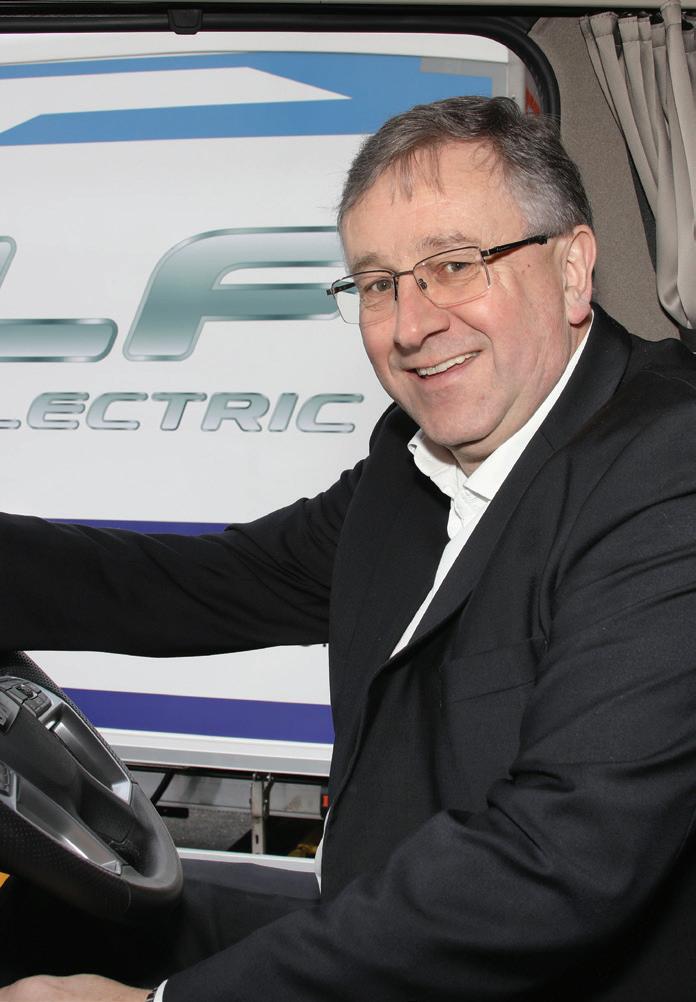
I hope you find the report a useful insight, and here’s to a prosperous future for us all.
Willie Paterson CEO, Asset Alliance GroupAsset Alliance Group research this year engaged the views of 419 decisionmakers in the fleet and logistics industry.
58% of respondents were board-level or owners, and 42% senior management. 95% have responsibility for or influence over fleet decisions. In 2022’s survey, there were 256 filtered responses and this year 419 – a 63% increase in the respondent base.
All the key figures on operating licence and vehicle numbers in Great Britain and Northern Ireland; and on the fleets run by our survey respondents.
P6-7
Logistics still pays... mostly. We provide the lowdown on all the biggest players in UK logistics and the growth they achieved in 2022.
Times are certainly hard and there are some big challenges ahead – but vehicle operators are still showing high levels of confidence about the future, according to our survey.
Our respondents share their plans for vehicle replacements and fleet expansion; we examine how total cost of vehicle ownership has moved on since 2019; and who’s top of the table among the various manufacturers in terms of vehicle sales.

Are we making any progress in our efforts to go green? And if so, why do most of our research panel have no plans at all to decarbonise their fleets in the next three years?
We round up the vehicles with alternative fuels and drivelines that are available from the various manufacturers right now or in the near future.
How this innovative finance provider has evolved from being a mere ‘challenger’ into a leading source of support to the logistics industry.
There were 70,319 operator’s licences in existence in Great Britain last year, according to the Traffic Commissioners for Great Britain Annual Report 2021-2022. Of these, the proportions of standard and international licences grew slightly, while restricted licences (for ownaccount operators) declined by less than 0.5%.
The number of licences does not correspond directly with the number of operators or fleets, but with the number of operating centres run across England, Scotland and Wales.
There were 25,428 standard licences in 2021-2022 (up 1.3% against 25,091 in 2020-2021) and 9,510 international licences (up 6.4% against 8,932 the previous year).
There had been a downward trend in licence numbers for many years. The Covid-19 pandemic interrupted this pattern, however, and the recent increases returned fleets closer to the 2019 numbers than those of 2020.
The outlier remained international haulage, which shrank to just 8,281
licences in 2019-2020 but which has risen by more than 1,200 licences since then (nearly 15%). This could indicate that operators who chose to remain within the international sector have finally gained some confidence following the Brexit implementation on 31 January 2020. It may also reflect the EU rule changes which took effect in May 2022, requiring anyone using vans or cars plus trailers with a gross train weight of 2.5 tonnes to transport goods to or on the continent to have an O-licence.
Although own-account operators made up over half of total licences,
they accounted for only 25% of vehicles. Standard licences accounted for 52% of the total vehicle parc and international licences for 23%. There were fewer than 380,000 vehicles on O-licences in the UK, out of a total of 407,000 registered altogether at the end of 2021.
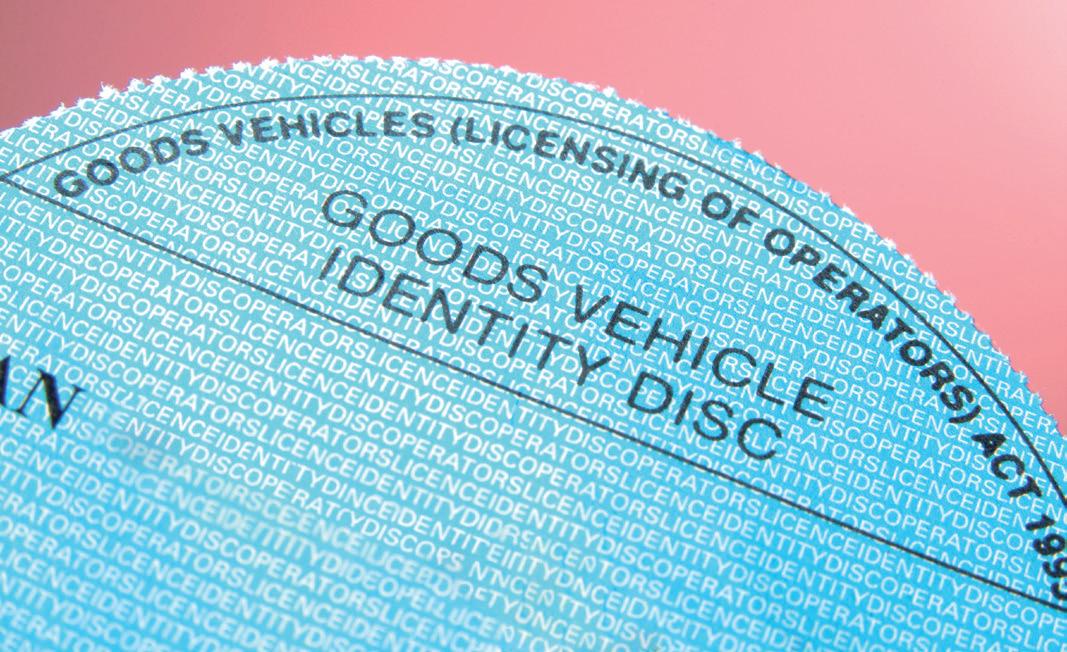
Of the 419 respondents in our survey, 3% run fleets of over 500 vehicles, while 11% have 101-500 vehicles, a further 11% have 51-100 vehicles, 10% run 31-50 vehicles, 20% have 11-30 vehicles, 12% operate 6-10 vehicles, and 33% have 1-5 vehicles.
Over a third of our respondents are in general haulage; 10% are in third-party logistics; 11% identified as being primarily in supply chain distribution and warehousing; 1% are public sector fleets; and 6% are in waste management.
Of our respondents, 62% are located in the Eastern, West Midlands, North Eastern or North Western traffic office regions.
Operator licence numbers held strong and even showed some growth in 2022
How would you primarily describe your fleet and logistics operations?
NUMBER OF RESPONDENTS TO THIS YEAR’S INDUSTRY MONITOR SURVEY
33%
PROPORTION OF FIRMS RUNNING FIVE OR FEWER VEHICLES
The top 30 logistics operators in the MT Top 100 saw turnover and profit boosted in 2022, and some, like DHL, XPO, Evri and Yodel, saw huge increases in profit. Margins overall were much stronger than a decade ago. The average pre-tax profit margin for the Top 100 was 5.2%, while the top 30 and top 10 averaged 5.9%.
When the Top 100 are grouped by turnover – £500m-plus, £100m-£500m, and £50m-£100m
– the leading few companies are all well into double-digits, and the average for each group is between 5% and 5.4%. The smallest players in the Top 100 – those with between £20m and £30m in turnover – are still averaging 4.5% pre-tax margins.
There are, of course, some not doing this well. But overall, it’s clear logistics can still make money and produce margins that allow for future investment.
The overarching purpose of our business is to deliver visionary logistics solutions for our customers and this has been critical for maintaining growth in a challenging economic environment.
The underlying strength of our business lies in our people, our suppliers and our local communities. Our people are extremely customer-centric – customer service is at the heart of everything we do.
The last year has been incredibly challenging with the war in Ukraine, supply chain issues and associated cost pressures in every area of our business. Our continued growth has therefore depended on the strength of our relationships with our customers. We have built this trust over time on the back of our excellent customer service and by providing value for money. We are an integral part of our customers’ supply chains and we have supported them with their sustainability objectives through the use of alternative fuels.
Our success is built on the back of our unique family business culture, which has enabled us to remain agile and adapt rapidly to our changing environment and evolving customer needs. We have strong partnerships with our suppliers and have continued to invest in our fleet, our technology and our people. This, in turn, has enabled us to move swiftly to open new sites, grow with existing customers, and welcome new ones.
According to figures compiled by Motor Transport, the top 30 own-account operators run more than 45,000 O-licensed vehicles between them – representing approximately 10% of the entire HGV parc and almost half of all the vehicles on GB restricted licences.
They are also significant in that for them, vehicles represent a cost rather than a revenue base, and they are driven towards sustainability goals by parent companies rather than by statutory pressures alone.
Hence companies such as John Lewis, Tesco and Sainsbury’s have been leaders in decarbonisation trials. John Lewis is replacing its home services fleet with electric vehicles as part of its commitment to move 4,000 cars, vans and light trucks to electric vehicles by 2030, at which point it aims to have an entirely fossil-free fuel fleet. Its HGVs will all run on biomethane by 2028. Overall, it says, this will give an 80% carbon reduction – an estimated 504,000 tonnes of CO2 – versus diesel.
Elsewhere, Warburtons intends to have 40-plus electric vehicles on the road by 2027 and is already running its first electric 16-tonner. Own-account fleets will therefore be crucial in driving decarbonised road transport solutions forward.
Those working on public sector or local authority contracts are also highly motivated. Biffa now has the largest UK fleet of 27 electric refuse trucks working in Manchester, for example.

5.9% AVERAGE PRE-TAX PROFIT MARGIN IN 2022 ACHIEVED BY THE TOP 30 LOGISTICS COMPANIES IN THE MT TOP 100
Gary Clark, fleet director, Veolia UK & Ireland Veolia’s fleet department is totally different from most others in the industry and includes a diverse range of vehicles and plant for things like waste collection, loading, demolition, liquid handling, construction, and facilities management – all of which are essential for our service delivery.
Managing this fleet of 8,650 vehicles has always been complex, and today involves the new challenges of transitioning to new technologies and operating practices that cut CO2 and other emissions, as we look to achieve a net-zero fleet by 2040. We are actively addressing this challenge and now have over 200 electric vehicles of different types, with many more in the pipeline, as well as HVO-fuelled vehicles. Replacing the fleet also presents new challenges with uncertainties on vehicle lead times. In the past we had a market where the customer was king – but now the seller is king. Delayed vehicle orders affect our fleet age profile, with fewer new vehicles and less capital expenditure shifting us to higher operating costs, due to an increased maintenance burden. Of course, maintenance is vital, and to keep our vehicles operational we need to have fully staffed vehicle workshops that can keep vehicles on the road, and also the trained drivers and operators to
make full use of them. Keeping and expanding this skilled workforce and offering varied career paths has required a multi-faceted approach including attracting new staff, retaining them, training and upskilling existing team members, and providing apprenticeships for the teams of the future.
Only by being creative can we ensure our fleet can meet the new challenges of the zero-carbon world, support business growth, and balance the needs of our customers. This is the challenge that we are mastering, as we build our fleet for the future.
Our research shows that operators are suffering from the effects of inflation and labour shortages.
The biggest concern for our respondents in the next 12 months is the gloomy economic outlook, which was cited by 28% in our survey, with the rising costs of fuel and energy a close second (24%).
Rising operational costs were cited by 15%, meanwhile, and almost a fifth of companies are primarily worried by the shortage of skilled labour – 11% lacking heavy goods vehicle drivers and 8% lacking HGV technicians.
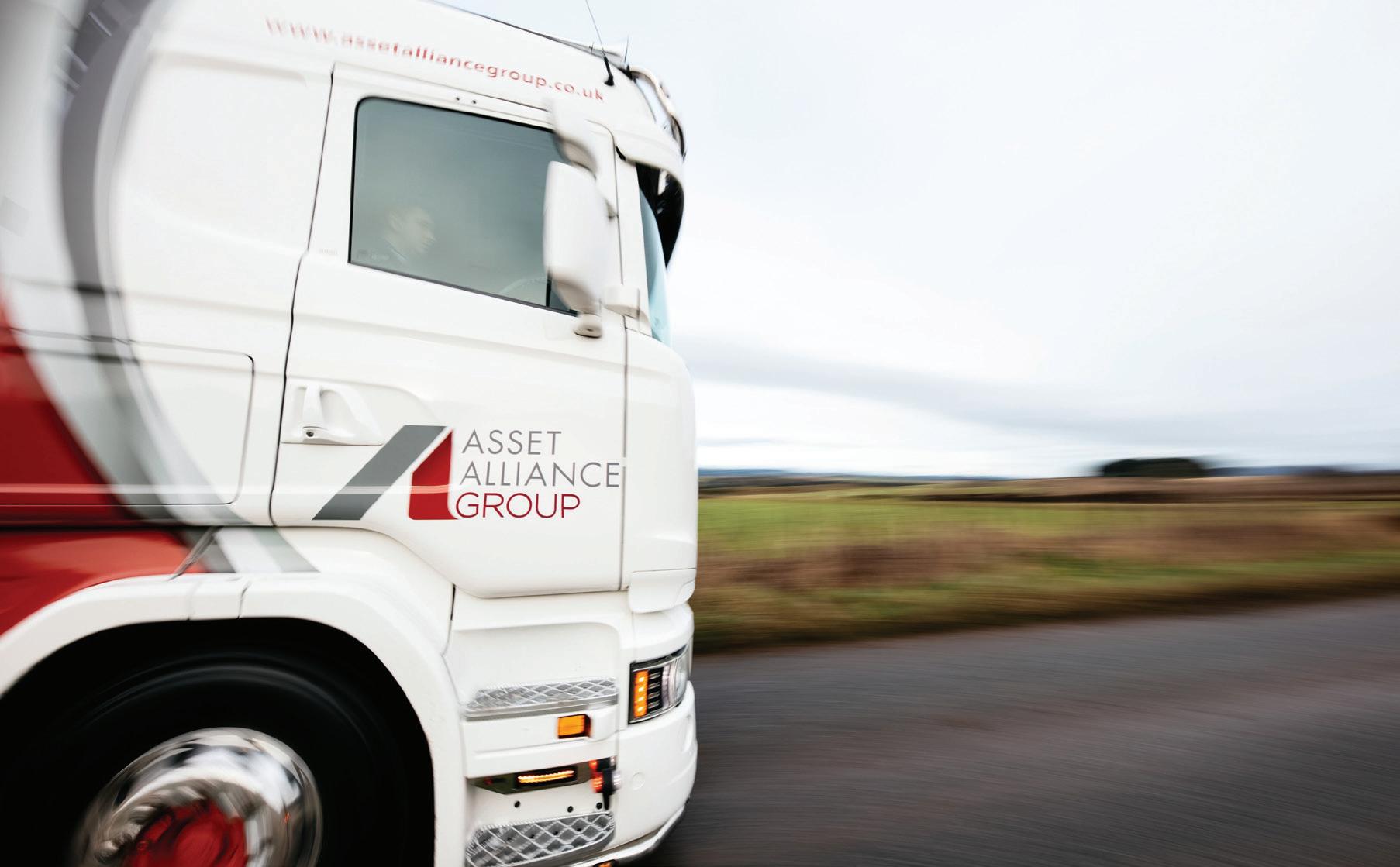
City initiatives and regulations such as clean air zones and the Direct Vision Standard were deemed the major challenge this year by 10% of respondents.
That said, 25% of respondents felt their company would hold its ground during 2023; 27% thought they would perform better; and 6% were bullish, predicting significant growth.
Of the 139 companies who

predicted growth, 36% said they believed they would grow by up to 5%; 40% predicted growth of 5% to 10%; 15% predicted between 10% and 20% growth; and 6% felt they would surpass 20%.
Conversely, 30% felt their company would do slightly worse this year and 10% significantly worse.
The three campaigns we launched a year ago – skills, facilities and the environment – each address huge operating and business challenges for our members and have been very successful at raising the profile of our great industry.
The skills campaign stemmed from the shortage of HGV drivers that we have seen over the past few years – a shortage we now see extending to workshop staff, technicians and fitters. It was because of our campaign that skills bootcamps were set up and then extended. The crisis hit public consciousness through media coverage and the general public became quick to acknowledge the shortage. It has led to hundreds of new drivers entering the profession, though we would be the first to acknowledge that more needs to be done.
The facilities campaign came about because the state of lorry parking facilities is a national disgrace. Nowhere else in Western Europe is there
such ramshackle, unsafe and unhygienic provision for the basic human needs of drivers. It’s a drum we banged successfully, with the government contributing more than £50m to improving existing facilities. But again, still more needs to be done.
Then there is the environment. The rush to net-zero for many SMEs is still unrealistically fast, given the pace of technological alternatives and the risk of being left with stranded assets – wagons bought in good faith that could be rendered unusable and unsellable. And then there is the related issue of clean air zones and charging for use.
But we’ve identified three additional priorities for our campaigning this year, all issues close to vehicle operators; and we feel they need as much attention as the first three.
The first is costs and regulation. At a time when the UK is facing recession and businesses are confronting increasing costs, how best can our members navigate these choppy waters? What unnecessary rules hold us back – and conversely,
This is about maximising opportunities, protecting standards and keeping costs down.
The UK’s infrastructure is another major headache, with crumbling roads, inadequate routes, badly planned roadworks, diversions and wrongheaded works. We need roads that help the UK to succeed, not hold us back.
And finally, there are issues to do with UK and international operations. What aspects of the Brexit deal hinder us? What tweaks need to be made, beyond the obvious Northern Ireland Protocol issues? We are a trading nation and we need to be able to trade freely, unhindered by bureaucracy from whichever national government or wider body may be holding us back.
These priorities have been shaped by the economic situation we find ourselves in and the knowledge that only by having a successful and vibrant commercial road transport sector can we drive into a new era of growth, prosperity and good business.
Of the 164 respondents who predicted a downturn, 17% felt their firm would contract by up to 5%; 37% said the decline was likely to be between 5% and 10%; 31% predicted a contraction of 10% to 20%; and 12% felt it would be worse than 20%.
When we asked our respondents to choose a single piece of legislation to revoke to improve the logistics industry, the Driver CPC was a clear winner, receiving dozens of mentions.
Not all respondents wanted to revoke it entirely but there was a clear desire to make it relevant, with either higher quality training, more scope for in-house training or even regular tests.
Many supported the initial concept of the DCPC but felt it had not delivered. Respondents felt that as it stood, it was a waste of time and money, or deterred drivers from HGV careers. The clear message: make it meaningful or get rid of it.
A more surprising nomination was that of drivers’ hours, about which our respondents’ main concern was that the law was unnecessarily complex.
The Working Time Directive, in particular, is apparently perceived as unnecessary and a continual complicating factor for operations.
The other rules our respondents
Inflation rose once again in February, with the Consumer Price Index (CPI) standing at 10.4%, up from 10.1% in January.
As a result, like every sector of the UK economy, the logistics industry is facing increased cost pressures.
The 85% reduction in energy support for business announced in January is driving further costs into our sector at a time of high inflation, with average gas and electricity market prices only 35% lower compared with the point at which the energy support scheme was originally announced.
Operating on narrow profit margins and with small to medium enterprises accounting for approximately 99% of the industry, this increased financial strain will be a challenge for operators throughout 2023, particularly as businesses are looking to invest in the transition to net-zero, a finite target that is being driven by government deadlines.
Logistics UK members are keen to decarbonise,
but the rising costs of charging electric vehicles, as well as costs of over £1m to upgrade depot power supplies to enable electric vehicle charging, will make the transition hard to achieve in the timeframe allocated.
And while uncertainty remains as to how heavy goods vehicles are to be decarbonised in practical terms, low carbon fuels (LCFs) provide a viable option for reducing carbon emissions by up to 80% with immediate effect, without the need for any significant vehicle modifications.
However, one of the main barriers to greater uptake of such low carbon fuels – in addition to the lack of infrastructure, of course – is the high cost of them.
It was disappointing to note within the spring budget announcement that the HGV levy is to be reintroduced from August. With no mass-
wanted to vote off were city-wide regulations. The Congestion Charge, ULEZ, clean air zones and the Direct Vision Standard were all mentioned repeatedly.
Again, those respondents who offered more context said they had no problem with improving air quality, or protecting vulnerable road users – but that they took exception to local rules as opposed to national ones, as this caused them operational problems and affected some operators more than others.
There was also a suggestion that while the concept of improving air quality, for instance, was good, the execution was poor.
Unsurprisingly, perhaps, the issue of Brexit seems to have lost none of its sting; several respondents said it had caused extra paperwork, made them unable to compete, or had caused labour shortages.
market solutions to Euro-6 currently available for HGVs, the levy will act as an additional tax on businesses already under financial strain, and will use up funds that could otherwise be invested in decarbonising operations.
Logistics businesses are also facing an increase in total vehicle operating costs, which rose by 12.6% in the 12 months to 1 October 2022. The sector simply cannot continue to absorb these rising costs and successfully decarbonise at the same time.
The industry was encouraged by the government’s recent decision to retain the 5ppl fuel duty cut but is calling for further government support in the form of an evidence-based longterm low carbon fuels strategy and a fair and equitable approach to funding depot charging.
The next 12 months will prove crucial financially for many businesses, and Logistics UK remains committed to working with members and government to ensure the sector can continue delivering for the nation.
Caroline Green MBE, chief executive, PalletTrack
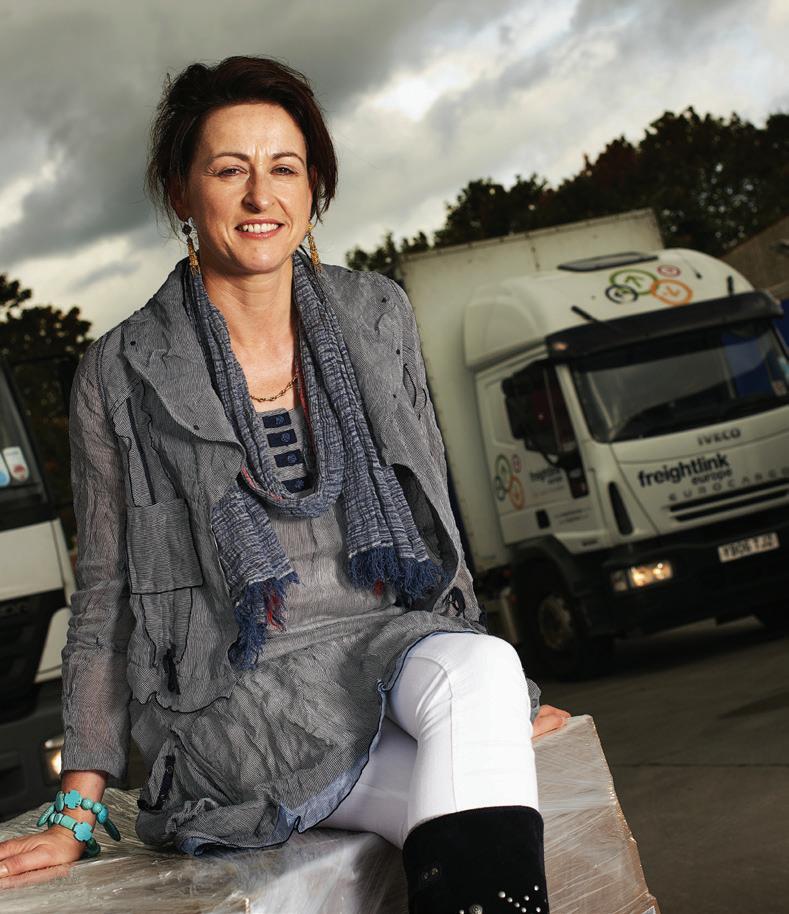
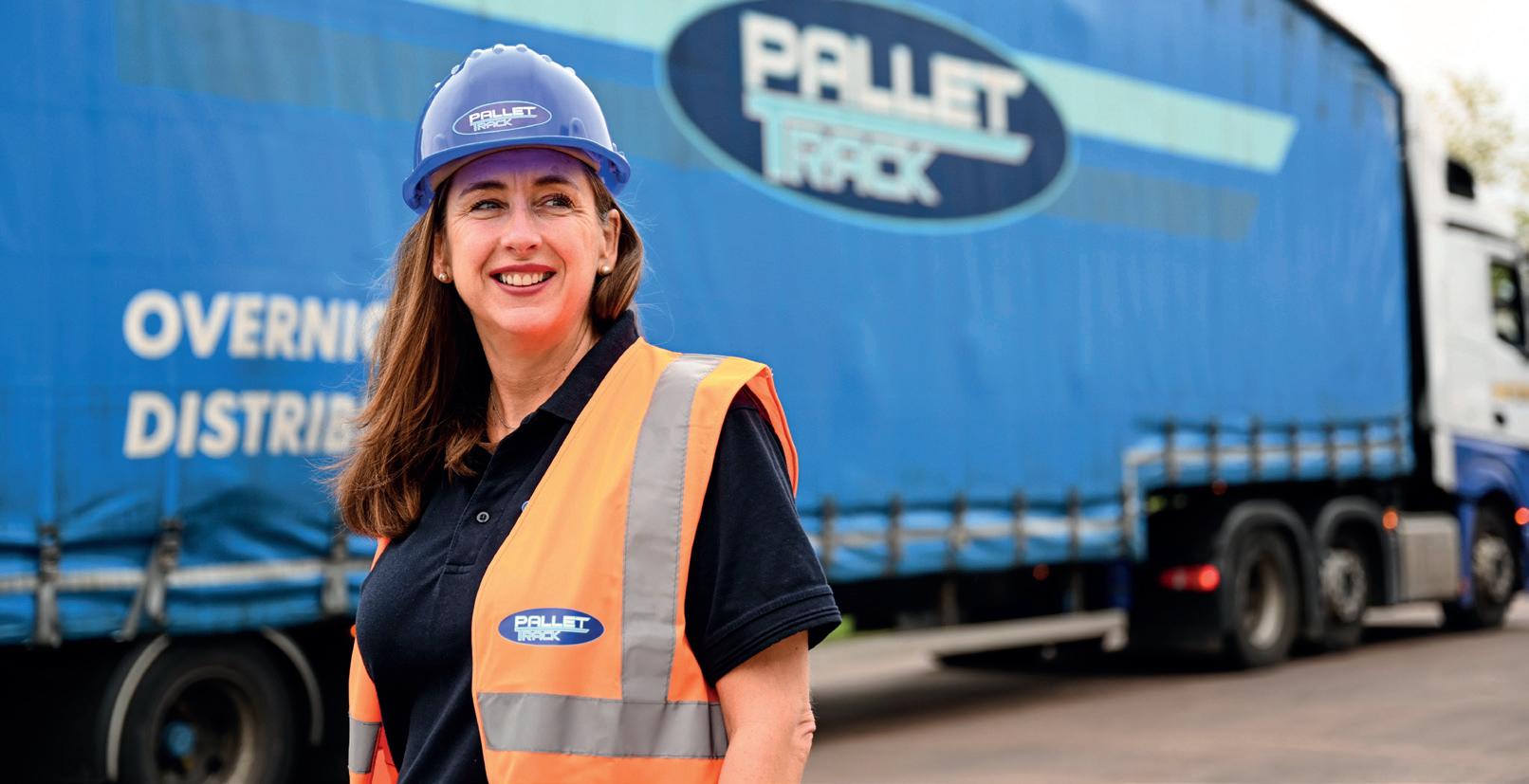
Pallet-Track’s overall outlook for the year is cautious. To date, volumes have been volatile across the sector, making planning difficult for our members, while the additional bank holiday has added to operational pressures.
Our network members are facing a number of ongoing challenges that are having a commercial impact and affecting growth. Uncertainties about the economy, coupled with rising operational costs, have made trading conditions difficult for independent hauliers of all sizes.
The rising costs of vehicles and vehicle parts is one area of concern for our members, as are rising interest rates, which impact on financing costs. At the same time, inflation is also pushing up prices for customers, who are putting hauliers under pressure to reduce rates and keep costs down.
Attracting workers to the logistics industry continues to be a challenge across departments. In addition to the ongoing HGV driver shortage, there is a shortage of HGV workshop technicians, which is delaying vehicle repairs and keeping trucks off the road, increasing pressures on
On the Driver CPC: “I understand the need for driver education and support but the current format does not work very well.”
“The most unengaging, useless, money-making farce in the history of haulage. It is also putting older, skilled and much needed drivers off.”
On the Direct Vision Standard:
“A significant on-cost again to the haulier. I have no issue with making the roads safer, but expecting the operator to bear all the cost is unfair.”
On clean air zones:
“Clean air [zones] at most are only halfmeasures and only affect a selection of users. It needs to be all or nothing, not just lip-service.”
operations teams to meet delivery deadlines.
Despite these challenges, Pallet-Track continues to invest in the development of the network to build a reliable and robust service for our members’ customers.
The ever-resilient transport industry seems to face never-ending challenges – like the pandemic, the driver shortage, soaring fuel costs, escalating maintenance and vehicle costs, the introduction of low emission zones across the UK, and the challenge to switch from internal combustion engines to electric vehicles.
During the pandemic we were heroes, and the driver shortage and increased fuel costs suffered by all and highlighted in the media meant increasing rates was easier than at any other time. However, as the country now suffers a period of economic downturn, companies have once again turned to the transport industry to cut rates. With reduced volumes, meanwhile, we have seen operators competing for freight, many with vehicles standing. Of course, the increased costs remain unchanged and this imbalance between
revenue and costs has forced many to go to the wall.
While larger operators may be able to weather the storm, I see difficult times for smaller operators – the backbone of our industry and on whom many of the major operators rely to ensure service levels to their customers.
We have also seen a time of mergers and acquisitions. Will those involving venture capitalists disrupt longstanding customer partnerships?
On the plus side, the consultation on the Driver CPC will hopefully see some positive changes, which should encourage more to return to the industry. Transport has been at the forefront in reducing the carbon footprint, too, as we see more and more electric vehicles carrying out urban deliveries, which may assist in changing industry perception and to encourage the next generation to enter the industry. Of course, an increase in safe and secure parking facilities is essential to ensure there is not a turnstile scenario, with those entering the industry becoming despondent and leaving almost as soon as they have entered it.
It is no surprise that a poor economic outlook is the leading concern of operators responding to our survey. Not only does this reflect dampened consumer demand and increased pressure on rates, but it also encompasses their next major concern – rising prices, particularly in terms of fuel, energy and other operational costs. As demonstrated elsewhere in this report, the cost of running trucks has risen dramatically – and for many operators the rates customers are prepared to pay won’t follow suit.
However, this is a resilient and a necessary industry. It’s practised at controlling costs and introducing efficiencies.
If we look at the MT Top 100 for 2022, it showed strong performances, with most firms increasing their turnover and profit. More importantly, profit margins were
strong: the leading parcel delivery firms showed double-digit profit margins, as did a substantial logistics operation like Turners of Soham. The average over the whole Top 100 was 5.2%.
This is what hauliers need to focus on over the next year: protecting their margins. Without those margins, there will be no ability to make the next huge investment in decarbonising fleets. And 60% of our respondents said they required higher rates from customers in order to attract and retain drivers. Whatever the challenges, logistics can’t face them by allowing itself to be devalued, or continuing with contracts that no longer pay.
Logistics models might well change over the next decade, but one thing won’t: customers must be prepared to pay for a quality, sustainable service.
This year’s research shows some interesting trends in vehicle acquisition, with a significant shift away from previous financing methods by 15% of respondents compared to their buying patterns last year.
Numerically, this is a small group – 37 of our companies – but it is enough to be statistically significant. Previously, 41% of them bought new vehicles outright and 19% purchased used vehicles outright. That outright purchase has lost appeal is perhaps not surprising. However the fact that 41% were deciding against rental, leasing or contract hire is perhaps more significant.
Although 84% of respondents overall will stick with their timetrusted methods of acquiring vehicles, the 15% shift reveals a lessening of confidence in the used market, and a desire for greater flexibility or perhaps a broader spread of risk.
However, in 2023, 45% of those acquiring new vehicles intend to buy outright; 16% will buy used vehicles outright; 15.5% will use rental, leasing or contract hire; and 21% will use a combination of these methods.
Overall 56% of respondents intend to replace
Outright purchase may be losing some appeal as truck operators seek more flexibility
vehicles during 2023, with 32% saying they will replace between one and five vehicles and, at the top end, 1% saying they will replace more than 100 units.
Only 30% of this year’s buyers intend to expand their fleets. Most of these (22%) will be adding between one and five vehicles, while once again, 1% will be adding more than 100 vehicles.
Fleets still show strong brand allegiance, although this has lessened since 2022. Among our respondents, 58% are committed to a specific marque for HGVs with 22% for trailers, while 38% prefer to run mixed fleets.
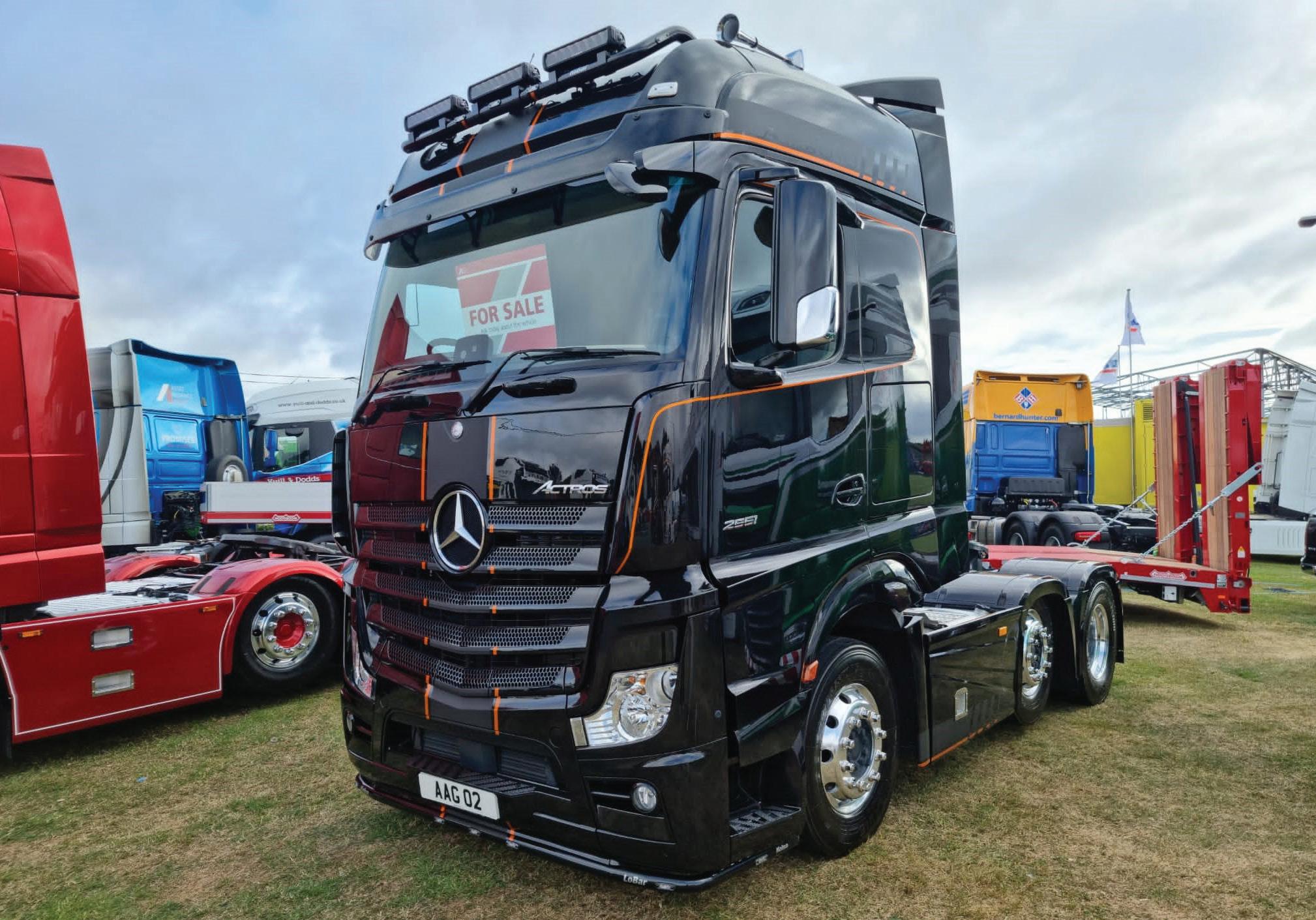
Which of the following best describes your primary way of adding or replacing vehicles on your fleet during 2023?
Outright purchase of new vehicles (including hire purchase finance)
40,716 NUMBER OF NEWLY REGISTERED COMMERCIAL VEHICLES DURING 2022
The factors underpinning brand allegiance (for those who consider it important) have stayed fairly consistent and are reliability (68%), whole life costs (51%), dealer relationship (36%) and fuel economy (35%).
The importance of the dealer relationship scored higher in 2022, but is now more in line with the 2021 results, so may not be statistically significant. Fuel economy has dropped a few percentage points, from 39% to 35%.
shortages, and 82% of these say they have run existing vehicles longer as a result.
Fleets also appear to be running trucks longer. In 2022, 15% of the market said they kept HGVs no more than three years; this year it was 12%. Elsewhere, 40% of the market run them for four to five years, 27% for seven years (the same as last year), and a slightly higher proportion run HGVs up to 10 years (14%, against 12% in 2022.) A further 5% will run them for 12 or 13 years.
Trailers typically have longer lifespans; 53% of the fleet keep trailers for more than eight years, with 11% keeping them more than 13 years. The proportion of fleets which disposes of trailers relatively quickly has shrunk slightly, with only 3% keeping them less than three years, 13% up to five years and 19% six to seven years. Each of these three scores is significantly lower than last year.
Among our respondents, 68% have incurred delays in vehicle acquisition due to long lead times or
2019 now appears as a halcyon period of low inflation, pre-Brexit stability and manageable energy costs. Since then, of course, the war in Ukraine has caused havoc in energy markets while global restraints on fresh food, and grain, among other things, pushed inflation to 11% in 2022. Eleven interest rate increases later (at the time of writing), CPI is still increasing at more than 10% with food prices at a 45-year high.
How has this affected the total cost of ownership of vehicles?
In 2020 the price of a 32-tonne 4x2 had risen from £71,170 to £84,791 – almost a 20% increase over 2019. And driver wages, including national insurance, had grown from £38,923 to £52,818 – a 35% increase over 2019. Fuel, meanwhile, grew from 49 pence per mile (ppm) to 70ppm; and overall mileage costs for a vehicle rose from 165ppm in 2019 to 220ppm in 2022. These were fairly staggering increases – and the pain isn’t over yet,
The economic and geopolitical challenges of the last three years have proven the critical role of Britain’s truck sector, with consumers and businesses becoming more reliant on logistics than ever. So it is no surprise that the number of trucks in use is at the highest level in history, with 615,570 in operation at the end of last year – up nearly 50,000 in the past decade.
While 2020 saw new truck registrations curtailed for obvious reasons, the market has delivered growth since, up by 12.9% in 2021 and 9.6% in 2022 to reach 40,716 units in the first full year of open trading. The swift upturn was inspired by robust demand from the haulage, construction and distribution sectors and, although a shortage of components – notably semiconductors – has constrained supply, these issues are beginning to ease. Indeed, while last year’s market in total
remained 16.1% below that of 2019, high fleet renewal in the third and fourth quarters drove registrations above pre-pandemic levels in the second half of the year – and Q1 2023 registrations increased by 17.1%, the best Q1 since 2019. So there are reasons to be optimistic.
However, it’s not a clear road ahead just yet.
From 2035, all new HGVs under 26 tonnes will need to be zero emission – the same deadline as for new cars and vans to be zero emission in the UK, though these are much further ahead in their transition. Zero emission vehicles (ZEVs) still comprise a tiny fraction of new truck registrations, with operators still uncertain about making the switch – a key challenge for the UK market and one exacerbated by the absence of any public HGVdedicated charging or hydrogen refuelling points.
As a result, Britain needs levels of public
infrastructure and incentives that match our world-leading ambition to ensure every operator is able to confidently and comfortably make the switch during the next decade. Manufacturers are investing heavily to ensure there is a choice of high performance and efficient zero emission truck models, but with just one full fleet renewal cycle to go until end of sale, swift action is needed to ensure that Britain is a globally competitive location for ZEV fleet operators.
Despite its earlier deadline, the UK’s operators risk being left behind their European counterparts who benefit from more attractive incentives to diverge from diesel. All stakeholders in this transition – government, distribution network operators, chargepoint providers and manufacturers – need to play their part to ensure the sector continues to grow for years to come.
We recently replaced more than two-thirds of our fleet, which was a conscious decision given the marketplace at the time.
We replaced 101 vehicles aged between four and six years old, and the new agreement with Asset Alliance Group will give us a relatively riskfree three years before needing to make a decision about future decarbonised vehicles. We have chosen not to purchase vehicles outright at the moment because there is too much uncertainty about the future residual values of internal combustion engine trucks.
Next year, we will replace 20 of the 30 remaining vehicles on the fleet. In all, this fleet replenishment gives us a cost-effective, compliant and modern fleet until 2026, by which time we think the market will have shifted, with new drivelines and low carbon alternatives more readily available. That’s something we will start to consider in 2024/25.
In the meantime, some of our fleet will be run on HVO, as this is a flexible and practical way to lower our carbon footprint immediately.
with inflation having broken free of a three-month decline to rise again in February and March. Although the Bank of England is confident its interest rate policies will suppress inflation in 2023, this still means businesses will be paying more on finance agreements and loans.
The gas price rocketed in 2022. The average non-domestic gas price rose by 124% on average in Q3 2022, against the same period in 2021, when prices had already begun to surge. Depending upon contracts, companies could find themselves paying several times their 2019 prices throughout the end of 2021 and 2022.
Some commentators believe that in the second half of 2023, gas prices will fall back to mid-2022 levels. However, this still increases the ownership costs for gas vehicles considerably, even taking into account the corresponding rises in diesel over the same period.
Motor Transport’s most recent
We’ve mainly used Mercedes-Benz trucks since 2014, because we have a good local dealership network, the trucks offer good value for money, and they are also comparative on fuel to other brands that we have trialled. We have trust in Asset Alliance Group for service and its ability to secure large numbers of vehicles from various manufacturers, which gives us the confidence that we will have the ability to choose the right vehicles for us at the right time.
Overall our fleet replacement allows us to remain in line with legislation in terms of decarbonising our fleet while remaining competitive and working with trusted partners.
Going forwards towards decarbonisation, of course, we will have to review the market and find the solutions that best fit the operation.
Chris Hyde, MD – convenience & food services, GXO
GXO is the world’s largest pure-play contract logistics company, with over 9,000 units and trailers in the UK and Ireland. As with everything we do at GXO, when we think about vehicle acquisition and fleet strategy, we balance different key factors – including how best to add value for our customers while remaining commercially agile and innovative, particularly in the current market. Each sector requires different solutions: retail and food services, for example, have markedly unique needs compared to industrial customers. As such, we put our customers at the centre of each fleet strategy decision, offering tailored solutions that
calculations show a CNG 44-tonne 6x2 unit, taxed for a triaxle trailer, costing £180,000 compared with a diesel equivalent of £87,000 - 107% more – and with residual values of only 5.5% of purchase price, compared to diesel’s more robust 17%. Its fuel cost is 80p per mile compared to 85ppm for a diesel truck. The diesel truck also requires AdBlue at 64ppl, however.


Over 100,000 miles, the gas truck would therefore save £5,000 in fuel and circa £20,000 in AdBlue each year compared to the diesel equivalent, all other running costs being equal. A CNG truck also saves 1,000 tonnes of CO2 over the course of a year over this mileage.
However, a recent Zemo Partnership report suggested that gas trucks benefit from an additive to prevent fuel leakage – the cost for this is not reflected in the calculations above.
Of course, TCO calculations for battery electric vehicles are even harder to pin down. Manufacturers
help to deliver optimal results.
Our fleet replacement and expansion efforts are supported by the range of strategic partnerships we have in place, which in turn allow us to provide industry leading end-to-end solutions for our customers.
Richard Cowley, head of transport solutions, GXO
In line with GXO’s corporate values and mission, environmental, social and governance (ESG) is a critical part of our approach to vehicle acquisition and fleet strategy.
We are working hard to meet our environmental targets, including constantly trialling and implementing innovative technologies [to enhance the sustainability of our fleets]. For example, we increasingly deploy HVO-powered trucks, which emit significantly lower levels of carbon than diesel, and are looking at other alternative fuels for our fleets. We are also trialling the all-electric Volta Zero to support our sustainable urban deliveries, which we believe will play a significant part in reducing emissions.
include such things as urban use exemptions (from clean air zones, etc) which could feasibly be replaced or dismantled during the vehicles’ lifetime. The comparative cost of electricity against diesel has recently been too volatile to ensure savings, and the residual values are unknown.
For many operators, given the current indicative price of such vehicles, credit elasticity may either be unavailable or much more expensive, to reflect the lender’s high risk. It’s likely, therefore, that new forms of finance will emerge, such as cost-per-mile leases, or truckas-a-service with specified usage terms.
17% RISE IN NEW VEHICLE REGISTRATIONS REPORTED BY THE SMMT IN Q1 2023
Decarbonisation is the biggest challenge facing logistics for decades. Yet our research shows little progress is predicted over the next three years.
The deadlines for ending the sale of new internal combustion engine trucks are looming – 2035 for anything under 26 tonnes and 2040 for heavier vehicles. This is two replacement cycles away for many operators, yet the challenges remain numerous and our research shows many operators are not even starting to look at this issue.
Battery electric vehicles (BEVs) are being run by 6% of our respondents, while 7% run gas vehicles, 3% run hybrids and 7% use biofuel of some description. As a whole, however, only 16% of them currently use an alternative driveline or fuel (some using more than one type). And the outlook for the next three years and beyond does not seem promising. Of those who currently run only internal combustion engine vehicles (84%), only 2% intend to run gas trucks over the next three years, while 5% intend to use biofuel. Hybrids and BEVs are at 6% and 3%.
Of the 353 operators who currently have no alternatively fuelled trucks in their fleet, 88% said they had no plans to run any, and only half of those thought this might change after 2026.
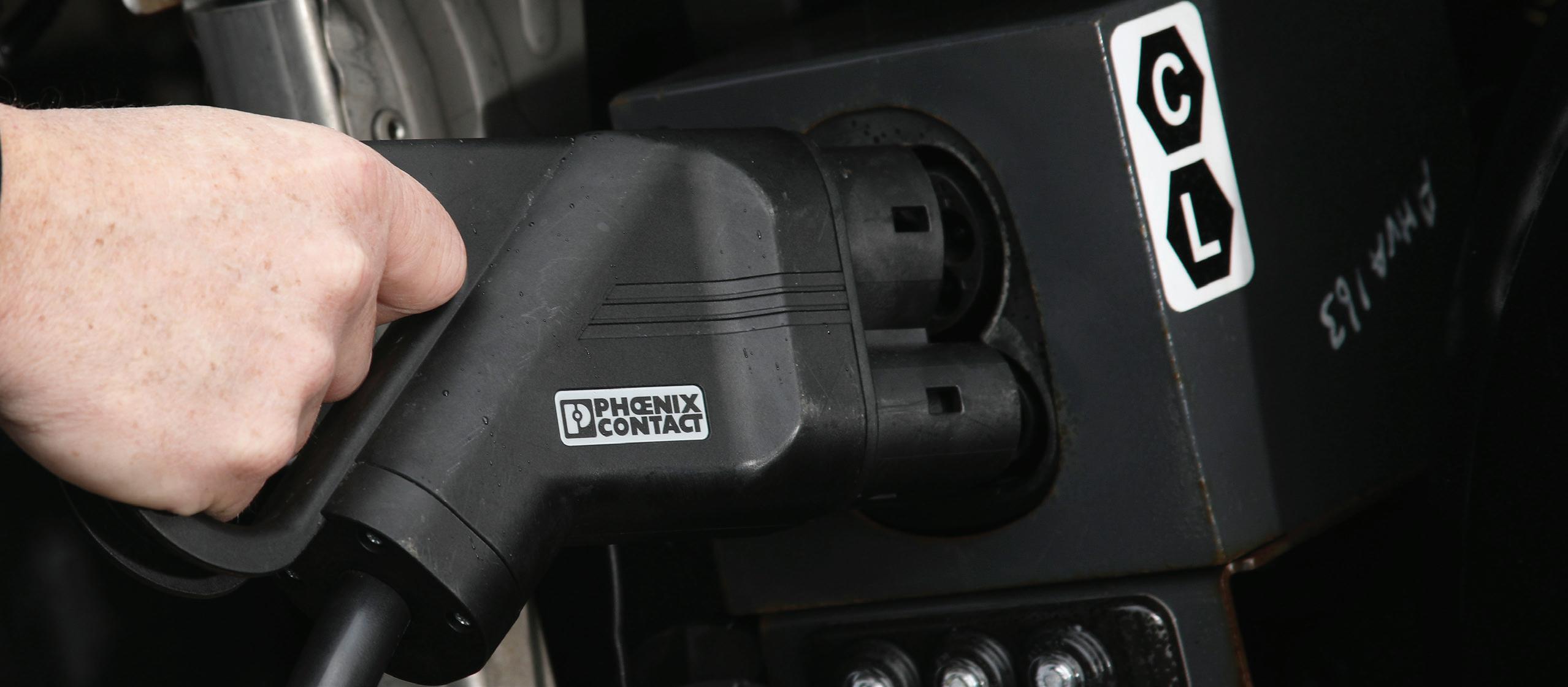
by 2026 add up to more than 100% because some use (or intend to use) more than one type.
It is perhaps surprising that the percentage of operators in our survey who currently run no form of alternative fuels or drivelines – 84% of our sample – only falls
to 75% (315 operators) by 2026, and that half of those who have no plans to change by that point also currently have no plans to do so in the longer term. While things are
Fleet decarbonisation doesn’t look to be taking place as quickly as might be hoped, judging by this year’s survey
still moving in the right direction, it seems, the progress is slow.
Nor are alternative-fuel vehicles entering the market as a high proportion of operators’ fleets, but rather as trial vehicles or in small numbers. Current SMMT data suggest electric and hydrogen trucks, for example, represent just one in 600 HGVs (0.16%). So although 25% of the market may be experimenting with alternative fuels by 2026, the number of vehicles awaiting a switch will still be enormous.
It’s particularly interesting that the number of fleets using biofuels shows slow growth over the next three years, as biofuels are considered to be a necessary bridging solution to lower the UK fleet’s carbon output, and will be essential for legacy fleets after the 2035/2040 deadlines.
So what needs to change? 55% of respondents cited better public refuelling infrastructure, while 51% called for fiscal support such as fuel rebates or a scrappage scheme. Half also said that the trucks (and infrastructure) needed to involve a lower upfront cost. About a third felt they lacked data on residual values and total cost of ownership. Meanwhile, 15% cited other incentives, such as priority parking
Better public refuelling infrastructure
Financial incentive from government such as reduced tax or scrappage scheme
Lower upfront costs
More data about total cost of ownership
More certainty about residual values
Extended manufacturer trial periods for new technology
Operational incentives such as better access to kerbside space or night-time deliveries
16% PROPORTION OF OPERATORS ALREADY USING ALTERNATIVE FUELS OR DRIVELINES
spaces and night-time access for alternatively fuelled trucks. New finance models only seem to hold appeal for one in five operators, however, with 81% saying they were not interested in any novel forms of finance. And
75% PROPORTION EXPECTING TO STILL BE RUNNING WHOLLY ON CONVENTIONAL FUELS IN 2026
40% said vehicle manufacturers were not moving quickly enough, with only 24% taking the view that OEMs were sufficiently committed to alternative-fuel trucks. The remainder were undecided on this point.
While it is clear from this year’s research that many of our respondents have yet to start their decarbonisation journeys, there are many reasons why the industry should start taking this matter seriously.
With commercial vehicles responsible for nearly 20% of the UK’s total domestic transport emissions, according to UK government figures, road freight transport is firmly on the radar of the legislators.
Many operators are already being asked to provide evidence of their carbon emission reduction plans under the so-called Scope Three SECR (Streamlined Energy and Carbon Reporting) regulations and such pressures will only increase going forward.
The UK government has just started consultation over the zero emission vehicle mandate for cars and vans which will ban fossilfuelled vehicles from 2030 and has, similarly,
outlined plans to phase out the sale of dieselpowered trucks below 26 tonnes gross vehicle weight by 2035 and the sale of all fossil-fuelled trucks by 2040.
Those legislative deadlines might seem a long way over the horizon, but the pace of change is accelerating and the need to decarbonise your operation will impact on you much sooner than you might think. Industry change is coming and within the next 10 years every commercial vehicle operator will be affected by the shift to a carbonzero fleet.
You will still be able to run diesel-powered trucks for the next 10 years (and probably more), but we’d be surprised if all the major conurbations hadn’t introduced zero emission vehicle zones in that timescale, or if there were not a taxation regime in place increasing the cost of operating diesel trucks.
Meeting this challenge doesn’t have to be purely
about switching to battery electric or hydrogen fuel cell vehicles, however.
There are plenty of things you can do today to demonstrate to your customers that you are taking climate issues seriously and to save money along the way – whether it be improved aerodynamics, enhanced driver training, deployment of routeing and scheduling optimisation or better fuel management.
Indeed, while we’re still in the fossil-fuel powered era, lower carbon emissions come about as a result of improved fuel efficiency and thereby cost savings.
At FreightCarbonZero.com, our new website dedicated to the decarbonisation of the commercial vehicle and road freight sector, we’re tracking all the routes open to companies as they start their journey to reduce carbon emissions. Register today for our weekly newsletter and regular updates at www.freightcarbonzero.com.
Dr Nicholas Head, head of sustainability – UK and Ireland, XPO Logistics
We’ve set ourselves challenging targets for decarbonisation. We want to reduce our emissions by 30% by 2030. Currently, 10% of the fleet are running on alternative fuels, and this will be 15% by the end of the year. However, you can’t afford to invest too extensively in a low-carbon fuel path if it has no long-term future. To support this interim approach, we aim to introduce EV rigids to the last-mile fleet – as the demo vehicles we’ve seen are quite capable of managing our use cases at 16 tonnes or 18 tonnes and we are beginning to see 26-tonne electric vehicles entering the market which have been on test with a number of our urban delivery clients.
Infrastructure is the major issue in transitioning to zero emission vehicles for all logistics operators. There are a number of issues in terms of ensuring you have sufficient power available. One distribution network operator (DNO) can charge three or four times the price of another, which can sink a whole business case if your connection need is in a strategic location.
A further consideration is the overall load for a site; for example, 100 EVs could require as much as 50MW to be available, comparable to a small village’s power needs. So operators need expertise in energy management, as well as change management.
The battery density of electric CVs is improving
apace, but charging times are still not fast enough. A 50kW rapid charger would require four hours to charge a 200KWh battery. As operators, we need that to reduce significantly, ideally to somewhere in the region of 45 minutes to an hour. Rapid chargers for HGVs will also need to be in the 0.5-1.0MW range, with the current standard being around 350kW; this is a further barrier to uptake and trialling within operations. Diesel vehicles are often double and triple-shifted, so this charging time is a critical issue.
Given that there is currently no public charging infrastructure for electric HGVs and very little for hydrogen refuelling, it will be difficult for the logistics industry to meet the 2035/2040 deadlines with sufficient scale. The government should consider extending the use of low carbon fuels as a bridging solution and look at incentivising the transition from low carbon fuels to zero emission vehicles.
As an industry, it is our responsibility to take meaningful steps to decarbonise our fleets. We have a host of viable, ready-to-use solutions, and our focus has been on electrifying the last-mile delivery segment.
For example, we are operating over 30 e-cycle projects in European cities that replace traditional delivery vehicles, cutting emissions, pollution
and urban congestion. Currently, we’re trialling electrically assisted eQuad bikes in Cambridge and London. These four-wheeled cycles allow our operators access to cycle lanes and zero emission zones, as well as narrow city streets and dual-use pedestrian areas.
Our efforts have also been centred on the use of electric package vans, particularly those with a GVW of up to 4.25 tonnes. However, when it comes to long-haul transport, the industry doesn’t have access to scalable zero emission solutions. We need coordinated research into the feasibility and cost-effectiveness of the electrification of highways for long-haul vehicles.
While there are a host of electrification solutions, it is important to consider charging infrastructure. Effectively supplying energy to the fleet is not only about installing charging points, but about a power network built to handle the significant energy required. UPS has worked with UK Power Network Services, Moxia and Cross River Partnership to develop the world’s first fleetscale smart-grid energy storage, being piloted in London.
Using the smart-charging system, we’re able to scale our electric vehicle fleet without making significant and unnecessary upgrades to the grid. We can reduce the cost of operating electric vehicles by optimising the timing of the purchase of electricity. These advances can be adopted more widely to bring value to fleet operators of all sizes.
With the phase-out date for the purchase of new (sub-26-tonne) non-zero emission trucks a little over a decade away, this survey of fleet operator attitudes lays down significant challenges to policy-makers and vehicle manufacturers alike, but also suggests that fleet operators are preparing for future changes, particularly in the medium (three year-plus) term.
With 75% of fleet managers not expecting to operate either zero or low emission vehicles in the next three years, take-up thereafter will have to be rapid. There is clearly an awareness on the part of operators that change will be necessary before very long; around half of those who have yet to make a change suggested they may do so beyond three years.
The barriers to uptake – particularly of battery electric and hybrid trucks – are clear: concerns about costs are prominent, both in terms of up-front costs and total cost of ownership, based on residual value uncertainties. As in other road transport sectors, financial incentives will undoubtedly be needed to kickstart the market.
The availability of infrastructure is also key, ranking highest of the influencing factors. While significant progress in the provision of recharging facilities for lighter vehicles is now being made, there is undoubtedly a need to focus on dedicated provision for HGVs, especially on strategic routes.
The £200m government-funded three-year Zero Emission Road Freight (ZERF) demonstration programme, therefore, could not be coming at a better time. With battery and hydrogen trucks to be

£200m
AMOUNT BEING INVESTED IN THREE-YEAR ZERO EMISSION ROAD FREIGHT DEMONSTRATION PROGRAMME
put into service in the next two years and the data and information shared widely, operators should soon have much more robust, real-world evidence on which to base their purchasing decisions in the second half of this decade.
The survey also covered renewable ‘green’ fuels such as biogas and biodiesel. Given the slow uptake of zero emission options in trucks, it seems critical to see greater numbers of operators considering these, as they are accessible now and can be quite easily introduced by many fleets with a minimum of disruption. In the short to medium term, these fuels can and will make a significant contribution to cutting greenhouse gas (GHG) emissions.
Zemo’s Renewable Fuels Guide and the accompanying Assurance Scheme (RFAS), which verifies the environmental and emissions-saving claims made by companies supplying renewable fuels to fleets, are helpful resources, and we would urge operators to take a closer look at what can be done now while the ZERF programme builds the evidence and confidence in the future.
For more information, see www.zemo.org.uk.
Almost all internal combustion engine (ICE) vehicles can be run on hydrotreated vegetable oil, either as a blend or neat. This, among other low carbon fuels, will be an important transitionary fuel offering immediate carbon benefits, and will enable less polluting legacy fleets after the ICE sales deadlines of 2035 and 2040. MAN, Nikola and Electra have not provided details of their ranges.
After forming in 2012, Asset Alliance Group has rapidly evolved to become the UK’s fastest growing commercial vehicle contract hire, fleet management, asset leasing, and commercial vehicle rental company. The business offers a wide range of award-winning lending, contract hire, rental and finance packages for commercial vehicle and bus and coach operators, as well as a growing number of general asset finance options.
Backed by the financial strength of Arbuthnot Latham, Asset Alliance Group’s expansion in 2023 includes its annual £150m procurement plan, ensuring the company has the upgrades required to renew and extend its customer base with the most efficient vehicle stock in the market.


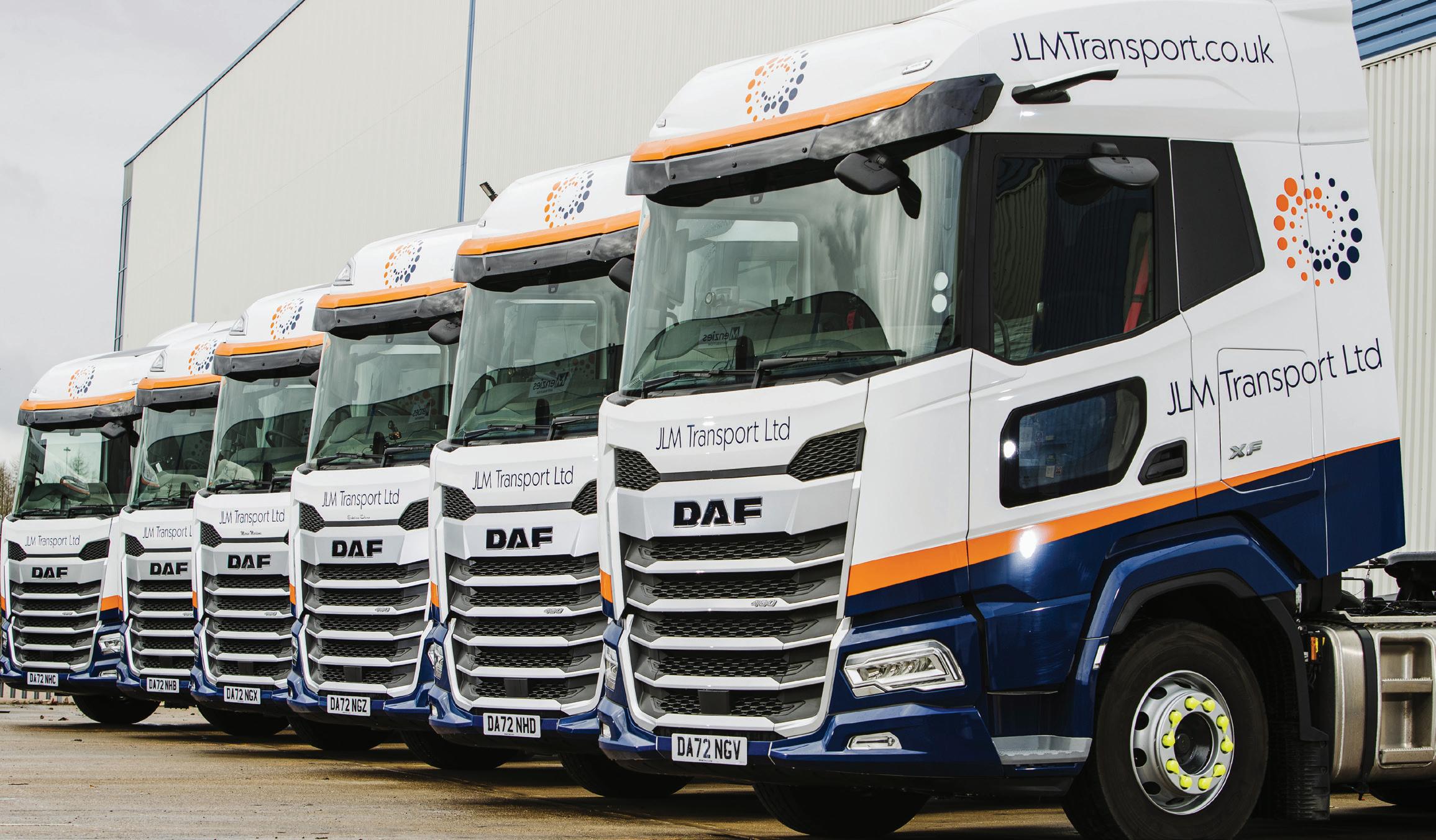
With flexible services designed around customers’ needs, expansion of the transport solution provider’s general asset finance and vendor
finance divisions is allowing it to help customers with capital expenditure beyond vehicles.
Chief executive Willie Paterson (pictured, left) says: “Asset Alliance Group has transformed itself from being a ‘challenger brand’ to one of the major players in the industry. We are strongly positioned to navigate the economic challenges created by global issues.
“Forecasts suggest that the UK economy is starting to recalibrate and, while transport and logistics operators are not immune to recessionary and inflationary pressures, we know that our industry is essential to getting the country driving forward again.”
In 2023, Asset Alliance Group has once again increased its fleet size by deepening relationships with vehicle manufacturers and maintaining its independent position in the industry.
As part of a three-year
Asset Alliance Group has been evolving fast and is now one of the leading players in the provision of trucks, as well as a host of other equipment types
£100m
RECORD TURNOVER ACHIEVED BY ASSET ALLIANCE GROUP DURING 2022
15% INCREASE IN STAFFING LEVEL AT ASSET ALLIANCE GROUP OVER THE PAST YEAR
£115m
VALUE OF VEHICLES AND ASSETS FUNDED DIRECTLY BY ASSET ALLIANCE GROUP IN 2022
expansion programme, the company agreed an order with Dutch truck manufacturer DAF earlier this year for 1,500 new electric and diesel trucks in a deal worth more than £160m that includes tractors and rigids with both electric and diesel drivelines.
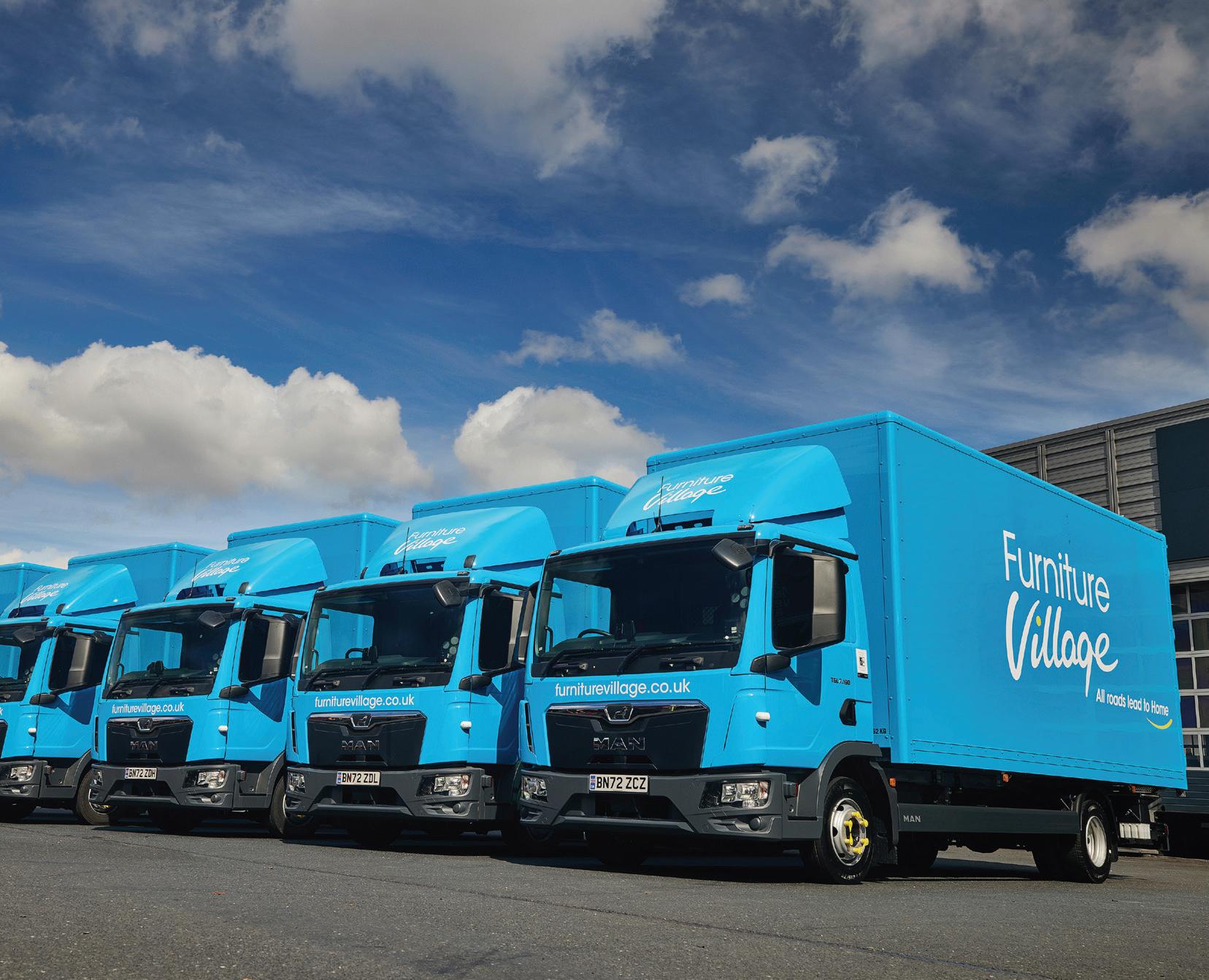
“This particular deal represents an enormous commitment for Asset Alliance Group and recognises the strength of the DAF brand in UK haulage and logistics,” says Paterson. “It underlines our commitment to developing plans to support our customers with the transition to green technologies.
“Another benefit of this level of investment is the return of end-of-lease vehicles which greatly helps the retail and used vehicle sales of our business. This division can rightly claim to be one of the UK’s largest in used heavy commercial vehicle sales. Despite the return to new vehicle supplies, we expect this side of our business to continue growing.”
After a year of record turnover, Asset Alliance Group has been expanding in other areas, too. Its bus and coach division recently chalked up a major milestone in exceeding £500m in funding vehicles, for example. The company has financed more than 2,500 buses and coaches since acquiring Forest Asset Finance in 2015, and is steadily becoming a major funder for operators across the UK, financing fleet upgrades for many of the leading national and regional bus operators. With further expansion on the horizon, the launch of the company’s general asset finance and vendor finance teams has already enhanced its ability to support operators and manufacturers with asset-based finance arrangements and capital expenditure support.
“It’s a really exciting time for our business. Clearly challenges exist across the UK economy, but we
are definitely looking forward with optimism,” states Paterson.
“As we embrace change and adapt, we will see more evolution. We are delighted with the culture we have developed in our company and are rightly proud of the staff, as well as the continuous service improvements and technology investments that are taking place across the business,” he continues.
“With these elements in place, we can continue to play our part in building a resilient and successful customer base which can have full confidence in Asset Alliance Group as a supplier partner going forward.”
£150m
SUM BEING INVESTED ANNUALLY BY ASSET ALLIANCE GROUP IN NEW VEHICLE STOCK